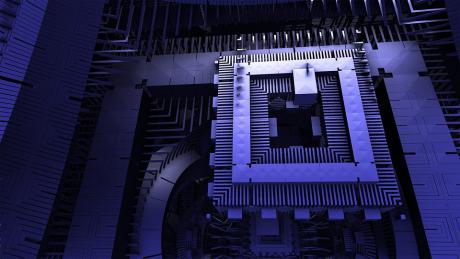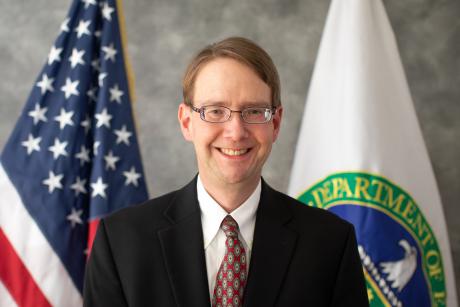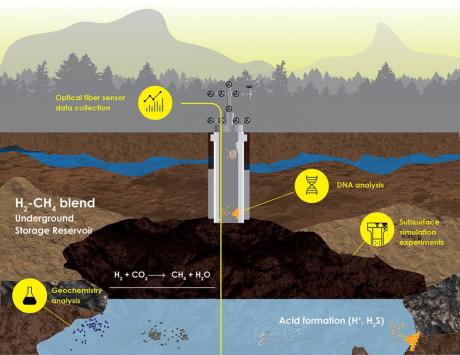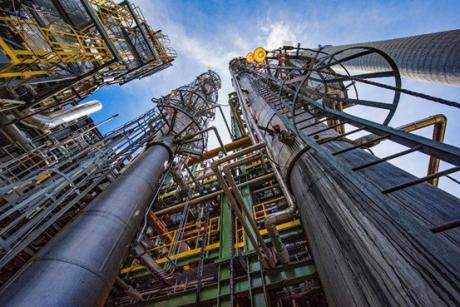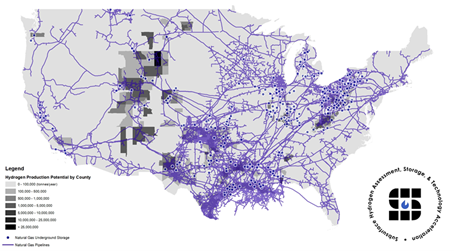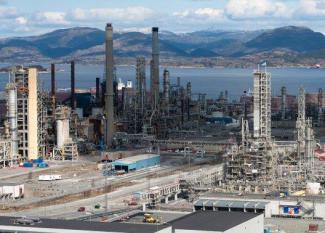NETL experts are preparing to put quantum computing, a rising, powerful and promising new force for complex and fast problem solving, to work on key energy research topics leading to an environmentally sustainable and prosperous energy future.
Quantum computing uses the principles of quantum mechanics to sift through large numbers of possibilities to extract solutions to complex problems at speeds exponentially higher than conventional computers with less energy consumption.
David C. Miller, Ph.D., has been named chief research officer of NETL.
A case study conducted by the U.S. Department of Energy’s (DOE) NETL examined the performance and cost of solvent-based direct air capture (DAC) system configurations that remove carbon dioxide (CO2) from the atmosphere.
U.S. Department of Energy (DOE) researchers across the nation are accelerating efforts to solve challenging production, transportation and storage issues to put hydrogen (H2) to work as a low-carbon fuel option for a range of critical energy applications. NETL is a key part of that overall effort with work to advance surveillance and monitoring technologies for underground H2 storage facilities that ensure maximum safety.
NETL recently updated its widely used study on the performance and cost of fossil-fueled commercial power generation systems.
WASHINGTON, D.C. — The Biden-Harris Administration, through the U.S. Department of Energy (DOE), announced on Oct. 19 the first set of projects funded by the President’s Bipartisan Infrastructure Law to expand domestic manufacturing of batteries for electric vehicles (EVs) and the electrical grid and for materials and components currently imported from other countries.
Across America, U.S. Department of Energy (DOE) researchers in national laboratories like NETL are working together to identify and develop containment and monitoring technologies for the safe and effective underground storage of hydrogen (H2). Concurrently, planning is under way to raise public perception and acceptance of the underground storage facilities needed to help make H2 a safe and practical low-carbon fuel source for a new energy economy.
NETL geo-data scientist Jennifer Bauer will discuss the Lab’s research activities focused on legacy oil and gas infrastructure — retired pipelines, platforms and other structures that remain in place after abandonment or end of use — at the Gulf Offshore Energy Safety Informational Webinar to be held from 11 a.m. to noon ET Thursday, Nov. 3, 2022.
NETL Director Brian Anderson will deliver opening remarks at the 2022 West Virginia Governor’s Energy Summit, Oct. 25-26 at the Stonewall Resort in Roanoke, West Virginia. There, Anderson will highlight NETL’s latest developments in hydrogen energy research and the Lab’s contributions to the White House Interagency Working Group (IWG) on Coal and Power Plant Communities and Economic Revitalization.
A transformational absorption-based carbon capture technology long supported by NETL that can help lower the cost of more effectively eliminating carbon dioxide (CO2) in a range of industrial applications is the subject of a new agreement between two technology development organizations to accelerate industrialization and scale-up.





